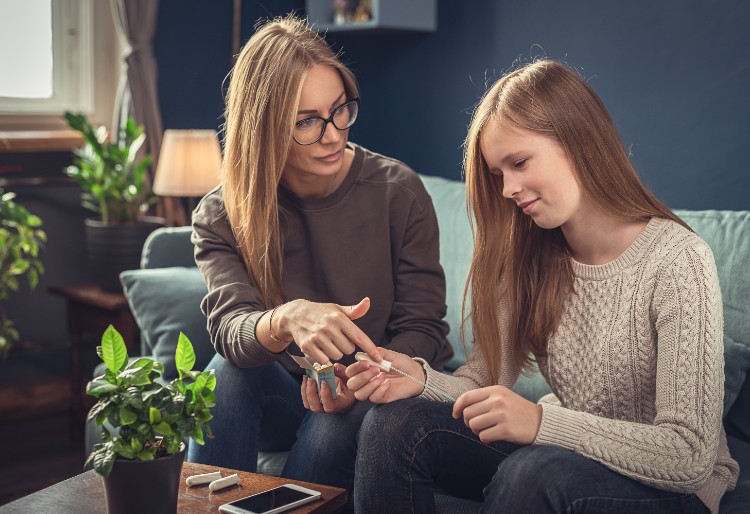First menstruation, how do you approach it?
Dealing with your daughter’s, niece’s or friend’s first menstruation with naturalness is important. We give you some advice about how to approach menstruation.
health and beauty
Share

Talking about menstruation with your children may be a little uncomfortable, but it is essential that they have all the information about their bodies so that they can make the best decisions. It is better that this takes place in their most familiar environment, and that we are the ones who explain to them what periods are and answer their questions.
How do you explain what the menstrual cycle is?
- Anticipate its arrival: Find a time to talk to your children about menstruation and puberty in general. It is important to do this before important changes take place so that they don’t amass too many questions. The conversation about periods and the menstrual cycle should also be had with boys in order to break the taboo and so that they have straightforward information on the subject.
Having the conversation in just one ‘chat’ is not recommended. Instead, start generating a dialogue around the subject so that the children can also contribute their questions and they feel free to talk about them.
2. Share your experience: Tell them about your experience of your first menstruation, or that of a person close to you. This will help to normalise the process and give them confidence to talk about the subject. Behave normally when you have your period and use your example to emphasise hygiene measures. Avoid false myths and taboos and include it into daily life as the natural process that it is.

3. Initiate a dialogue: Don’t shut off when faced with questions that may be uncomfortable. Look for an answer according to the age and interest of your son or daughter.
As they grow up, the subject will raise more complex questions. You don’t always have to have all the answers, ask a specialist if you need to. In your conversation, you could include information on menstrual hygiene, how the body changes (breasts, hips, hair…) and some basic facts about the cycle, such as how to deal with the subject of sexuality, going into detail about what their body is, what happens within it and how it functions. Teach them to love it and to appreciate it.
4. Talk about the different options: Before children fully reach adolescence, it is very positive for them to know about the different product choices for menstruation: panty liners, sanitary towels, tampons, cup… so that they view them as another element of the family medicine cabinet. Emphasise the importance of changing regularly, every 4 to 8 hours when using sanitary towels and tampons, and every 8 to 12 hours when using a menstrual cup. Have different types of feminine hygiene products available and encourage your daughter to try them and find the product that is most suitable for her.
The basics
• Age: The first menstruation generally occurs between 9 and 15 years of age.
• Cycle: Frequency is very irregular for the first two years. When it becomes regular, they occur every month, and there are around 25 to 30 days between one period and another.
• Duration: Bleeding takes place for between three and seven days, but it can be shorter or longer (especially at the beginning).
• Flow: It is common for it to be more abundant at the start and to get lighter towards the final days. It may be brown, pink or red, thick, clotted or watery.
• Premenstrual syndrome: this is a group of symptoms that may occur just before a period. The most common are: headaches, mood changes, irritability, muscular tension, tiredness, swollen abdomen and painful breasts.






